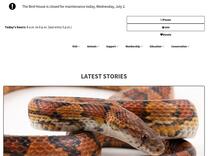Carnivores | Smithsonian’s National Zoo and Conservation Biology Institute https://nationalzoo.si.edu/center-for-species-survival/carnivores
An estimated 25 percent of carnivores are in danger of extinction.
habitat loss, disease, hunting and climate change, 25 percent of carnivores are in danger

